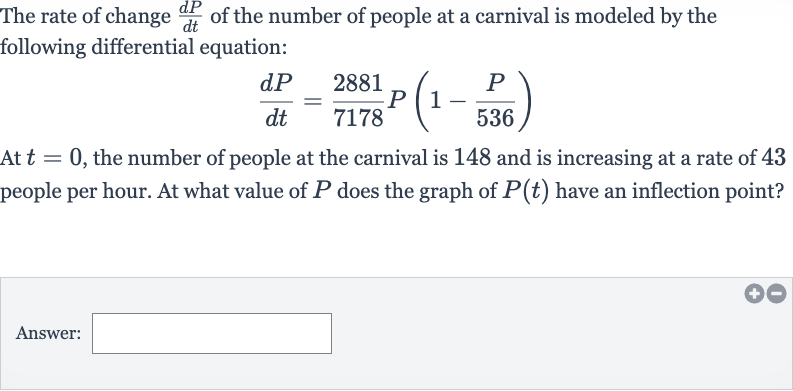AI tutor
Welcome to Bytelearn!
Let’s check out your problem:

The rate of change of the number of people at a carnival is modeled by the following differential equation:At , the number of people at the carnival is and is increasing at a rate of people per hour. At what value of does the graph of have an inflection point?Answer:
Full solution
Q. The rate of change of the number of people at a carnival is modeled by the following differential equation:At , the number of people at the carnival is and is increasing at a rate of people per hour. At what value of does the graph of have an inflection point?Answer:
- Find Second Derivative: To find the inflection point, we need to find the second derivative of with respect to and then determine when it changes sign. The given differential equation is:First, we need to find the first derivative of with respect to , which will give us .
- Calculate First Derivative: The first derivative of with respect to is given by the derivative of the right-hand side of the equation with respect to . We apply the product rule and the chain rule to find this derivative:Let's denote as a constant for simplicity:Now, we differentiate:
- Set Second Derivative to Zero: To find the inflection point, we set the second derivative equal to zero and solve for :Since is a positive constant, we can divide both sides by without changing the inequality:Now, we solve for :
- Solve for Inflection Point: We have found that the second derivative changes sign at . This is the value of at which the graph of has an inflection point.
